THE ART OF THINKING

Thinking is the process of using our minds to analyze information, solve problems, and make decisions. It is a fundamental human ability that allows us to navigate our world and make sense of the endless stream of information that we encounter every day. However, not all thinking is created equal. There are different types of thinking and mastering the art of thinking requires understanding the different ways our minds work. The art of thinking is a vital skill that you can learn to enhance your life. There are various techniques and practices which you can follow and implement to enhance your ability to think.
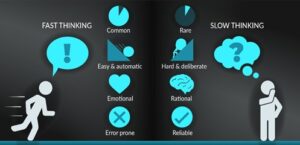
Fast and Slow Thinking
One of the most important distinctions in thinking is between fast and slow thinking. Fast thinking, also known as “System 1” thinking, is the quick, automatic, and intuitive thinking that we use to make sense of the world around us. It is the thinking that we rely on when we need to make a quick decision or react to a sudden change in our environment. Fast thinking is effortless, immediate, and unconscious.
On the other hand, slow thinking, also known as “System 2” thinking, is the deliberate, effortful, and logical thinking that we use to solve complex problems and make important decisions. It is the thinking that we rely on when we need to focus on a task, think critically, and make sense of complex information. Slow thinking is conscious, controlled, and requires effort.
The Art of Thinking
Mastering the art of thinking requires understanding the strengths and limitations of both fast and slow thinking and knowing when to rely on each type of thinking. It also requires developing the ability to switch between the two types of thinking as needed. Here are a few tips for mastering the art of thinking:
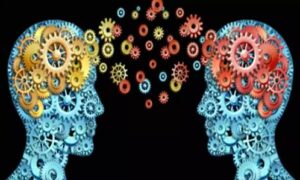
- Recognize the power of fast thinking: Fast thinking is incredibly powerful and can be incredibly useful in many situations. It allows us to react quickly and make sense of the world around us. However, it can also lead to mistakes and biases if we rely on it too much.
- Develop your slow thinking skills: Slow thinking requires effort and practice. It can be developed through activities such as meditation, reading, writing, and problem-solving.
- Learn to switch between fast and slow thinking: Being able to switch between fast and slow thinking is crucial for effective thinking. It allows you to use the strengths of both types of thinking and avoid their limitations.
- Practice mindfulness: Mindfulness is the ability to focus on the present moment and observe our thoughts and emotions without judgment. It is an important tool for mastering the art of thinking because it helps us to become aware of our thoughts and to control our reactions to them.
- Take time to reflect: Reflecting on our thoughts and experiences is crucial for understanding ourselves and the world around us. It allows us to learn from our mistakes and to make better decisions in the future.
What are the different ways of thinking?
Thinking is a cognitive process that enables people to make sense of their experiences. It is used to plan, organize, make decisions, and make connections. The different types of thinking can be used in different situations.
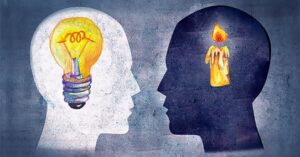
Divergent thinking is a way of thinking that opens your mind to different ideas, possibilities, and perspectives. It starts with a common point and then develops in different directions. Typically, it uses multiple points of view to find a solution. Generally, it is associated with creative thinking.
Creative thinking is a style of thinking that focuses on new ideas. When you are a creative thinker, you are always thinking of new solutions to problems. If you are a creative thinker, you can analyze a bicycle and then come up with a new idea to improve the speed of the bike.
Concrete thinking is a type of thinking that emphasizes sensory perceptions. People who use concrete thinking tend to think of physical objects. They will use concepts, and languages and present sensory perceptions to understand the world. Let’s take a look at some of the popular books which have dealt with thinking and the benefits of using their thinking methods.
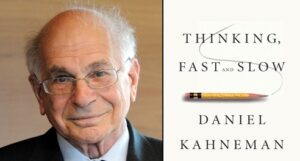
Thinking fast and slow by Kahneman
Thinking fast and slow by Kahneman, is a book about two modes of thinking, or more specifically two heuristics. It is one of the most popular books on cognitive science, and it’s easy to see why. The book is a distillation of decades of research. Besides the big picture, it includes dozens of interesting tidbits. For example, the book does mention the “focusing illusion,” which is a cleverly disguised way to say that we rarely consider the Known Unknowns in our decision making. The book is written in an easy to understand style, and covers a wide array of topics. Its a great resource for anyone who’s ever wondered what makes us tick. A quick scan of its contents will reveal that we’re not the only creatures who think the hard way. We often rely on heuristics to make our decisions. This, Kahneman claims, has led to the aforementioned focusing illusion. The book is a bit longer than you’d expect, but its contents make it a worthwhile read. As a general rule, the best books about psychology will offer a combination of enlightening and entertaining content.
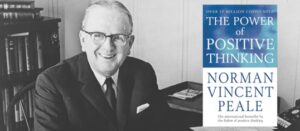
Positive thinking by Norman Vincent Peale
One of the most successful and influential books in the world, The Power of Positive Thinking, was written by Norman Vincent Peale. It is a self-help book that promotes positive thinking, as well as the idea that you can achieve a happy and fulfilling life through your own efforts.
Peale’s techniques involve visualizations and affirmations. He claims that positive thinking can solve any problem, overcome any challenge, or reach any purpose. This system of thought has been applied to a wide range of people, and has helped them to become more successful in their lives.
The Power of Positive Thinking has sold more than five million copies worldwide, and it has been translated into more than 40 languages. The book focuses on positive thinking, Christian philosophy, and biblical case studies. The book is based on ancient wisdom, but it takes a modern approach to positive psychology. In this regard, the author draws on the works of William James, Emerson, and Marcus Aurelius, among others. Despite its effectiveness, The Power of Positive Thinking is not without some criticism. Meyer, for example, claims that the book’s ideas are not effective in an adversarial environment.
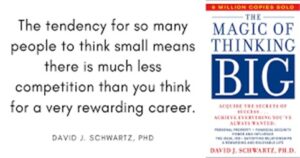
Magic of thinking big by Schwartz
The Magic of Thinking Big is a self-help book that helps readers become more successful. It is based on the principles of positive thinking. In this book, the author teaches readers how to think big and how to take action if they want to achieve their goals. He shows readers how to apply these principles in real-life situations. Throughout the book, the author shares dozens of practical ideas.
The book was first published in 1959. During the time it was written, the author was a professor at Georgia State University. Later, he worked as a life strategist and self-help coach. Having learned how to overcome his own obstacles, he wrote the book to help others. Schwartz has also recommended the book to many other people, including billionaire Chris Sacca. The book is based on the theory of “10x” thinking. Most people live their lives with small goals. When you set larger goals, you open yourself up to new ways of solving problems. You gain confidence in yourself and earn respect from other people.
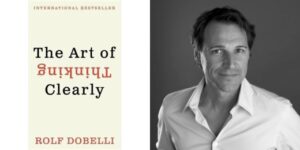
Art of thinking by Dobelli
The art of thinking about your customers, employees and stakeholders isn’t easy. Thankfully, a well-crafted strategy can help you get the job done. A well-crafted strategy can also help you to make the right decisions at the right time. One such strategy is to understand the tenets of your own unique selling proposition (UWP). If you are looking to learn about the tenets of your UWP, consider reading The Art of Thinking by Dobelli. This e-book will teach you about the tenets of your unique selling proposition, including what to say and what not to say. You will also learn about your competitors and the steps you need to take to improve your competitive advantage. By implementing these tenets, you can ensure that you become an industry leader in your field.

HOW CAN WEIMPROVE OUR THINKING ABILITY
There are several ways to improve our thinking and cognitive abilities:
- Exercise regularly: Physical exercise can improve cognitive function by increasing blood flow to the brain and promoting the growth of new brain cells.
- Get enough sleep: Sleep is essential for the brain to consolidate and process information, and lack of sleep can negatively affect cognitive function.
- Learn something new: Challenging your brain with new tasks and learning new skills can help to improve cognitive function and prevent age-related decline.
- Practice mindfulness: Mindfulness practices, such as meditation and yoga, can help to improve focus, attention, and decision-making abilities.
- Read and write regularly: Engaging in activities that involve reading and writing can improve language skills and critical thinking abilities.
- Practice problem-solving and critical thinking: By regularly practicing problem-solving, critical thinking and decision-making skills, you can improve your ability to analyze and interpret information, generate new ideas, and make logical conclusions.
- Have good nutrition: Eating a diet that is high in fruits, vegetables, and omega-3 fatty acids can provide the brain with the nutrients it needs to function at its best.
- Stay mentally active: Keeping your mind active by doing puzzles, playing brain-training games, or even just socializing with other people can help to maintain cognitive function as you age.
- Take breaks and reduce stress: Taking regular breaks and managing stress can help you to stay focused, avoid mental fatigue, and maintain overall cognitive health.
It’s important to note that it’s not just one thing that will improve your thinking, it’s a combination of many things and a lifestyle change. The key is to make these things a habit, and stick to it.

CONCLUSION
In conclusion, thinking is a fundamental human ability that allows us to navigate our world and make sense of the endless stream of information that we encounter every day. Mastering the art of thinking requires understanding the strengths and limitations of both fast and slow thinking, and knowing when to rely on each type of thinking. It also requires developing the ability to switch between the two types of thinking as needed and developing the skills that support effective thinking such as mindfulness and reflection. By mastering the art of thinking we can make better decisions, solve problems more effectively and navigate the world with more insight.
 Dr K. Jayanth Murali is a retired IPS officer and a Life Coach. He is the author of four books, including the best-selling 42 Mondays. He is passionate about painting, farming, and long-distance running . He has run several marathons and has two entries in the Asian book of Records in full and half marathon categories. He lives with his family in Chennai, India. When he is not running, he is either writing or chilling with a book.
Dr K. Jayanth Murali is a retired IPS officer and a Life Coach. He is the author of four books, including the best-selling 42 Mondays. He is passionate about painting, farming, and long-distance running . He has run several marathons and has two entries in the Asian book of Records in full and half marathon categories. He lives with his family in Chennai, India. When he is not running, he is either writing or chilling with a book.
